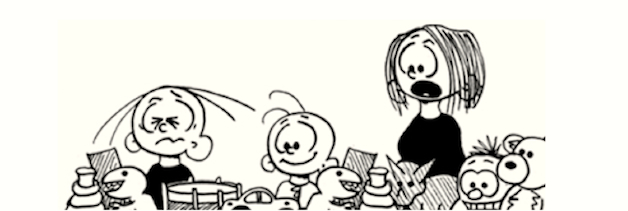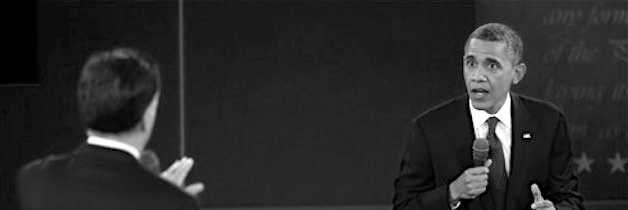(In the words of Will Robertson)
When I was twelve, my Dad had to spend six weeks in Oklahoma for follow up training for his job. He decided to bring the whole family, so we all prepared for a cross-country road trip.
We had a small car, so my sister and I were allowed to bring only what we could fit in a small bag that fit on the back of the front seats. I decided to take some comic books and a pad of paper and colored pencils.
I didn’t know it at the time, but that trip was going to change my life.
The first day, I just read: Garfield, Peanuts and Bloom County. The second day, I started doodling, and by the time we arrived, I was drawing my own cartoons.
They were terrible, but all that summer, I was at the library, reading cartoons, reading about cartoons, and reading about the lives of cartoonists.
I loved it.
That fall, when I returned to school, I began to publish a page of cartoons in the school paper. That year, I won my first national cartooning contest and was featured in a book of the 100 best editorial cartoons by students, beating out thousands of other cartoons. Mine was poorly drawn, but there was something there that had connected with the editors and my teachers began to take an interest in helping me with my writing.
In High School, I made friends with my school librarian, a wonderful woman named Pat Kizer, who created a bulletin board in the main hall for my strip and encouraged me to draw a daily cartoon. Every day I would post the new cartoon and it was read by nearly every student as they went from class to class. I got tons of feedback from the other students and it began to get noticed by people in the community.
Soon, I was getting interviewed by larger newspapers, my work was beginning to show up in various publications and I was starting to get requests to create custom art for ads.
At one point, when I was sixteen, I submitted to a large newspaper in the area and got a meeting with the comics editor. During the meeting, the editor asked me some tough questions about how I worked, and how that would work if they were going to partner with me on a cartoon and I came up short.
I’d read in a bio of Charles Schulz (creator of Peanuts) that he made a point of publishing his home phone number in the phone book so that he would be accessible. As soon as I read that I’d called directory assistance and I had his phone number written down. I’d wanted to call him for about a year, but my mom wouldn’t let me. After the meeting, I asked if I could call him and get advice on what I should do, and my mom said it was okay, so I called him and got his answering machine. I left a message and waited all day for a call back, but there was none.
The next morning, though, the phone rang and it was Jeannie Schulz, Charles Schulz’s wife. She gave me the phone number for his studio and told me that he would be expecting my call after school.
That was one of the longest days of my life. School went so slowly, but finally it was over and my whole family crowded around the phone as I placed the call. I got the receptionist, gave her the info that Mrs. Schulz had given me, to get me through, and a few moments later, I was on the phone with Charles Schulz!
The call lasted about fifteen minutes, but it changed the way I looked at cartoons. My drawing style has always been influenced by his, but after our conversation, my philosophy of cartooning was changed as well. His main advice was to focus on drawing funny pictures and not to take myself too seriously. He felt that at my age, I shouldn’t be focused on charging for my work, but on getting my work into print if I was able. He explained to me his ideas on creating characters that were unique and giving them personalities that would guide the strip along when the writing got hard.
I continued to draw cartoons through college, then I took a break for nearly a decade. When I was 27, I began to think about creating a new strip, and all of that advice and philosophy guided me as I was creating the personalities of the characters and what the “spirit” of my strip was going to be like. I focus on creating a space each day that makes the reader happy that he spent a few seconds of his day in my little world. I try to make the art fun to look at, but simple enough to be accessible. I allow myself to be self-deprecating.
I focus on giving the reader a good time and, like Schulz said about his cartoons:
If you want to know what I think about the world, or what I believe, you can look at my work and you’ll know.
“Casey and Kyle” is a comic strip about the fun and chaos of kids. It’s inspired by my own boys and some of the experiences and personalities that we’ve come across. It’s about running in the hallways and cringing at lima beans in the casserole. It’s about not wanting to go to sleep, and being thirsty in the middle of the night. It’s about exasperated moms and playful dads and sibling rivalry. It’s full of energy, but I try to give it a heart that goes beyond a simple gag.
I hope you enjoy it.
* Editor’s note: I met Will a month ago, sitting at a table with a stack of books (Casey and Kyle – I’m saving up for a Big Brother). We chatted as I looked through the book, and I quickly decided to buy the book–which Will then signed and drew a custom “toon” on the inside title page. I launched into a description of Tribble News and asked if he’d perhaps care to have us post his cartoon. And here we are. I love his work and I suspect “Sparky” Schulz would be smiling and congratulating Will were he here now.










Trackbacks/Pingbacks